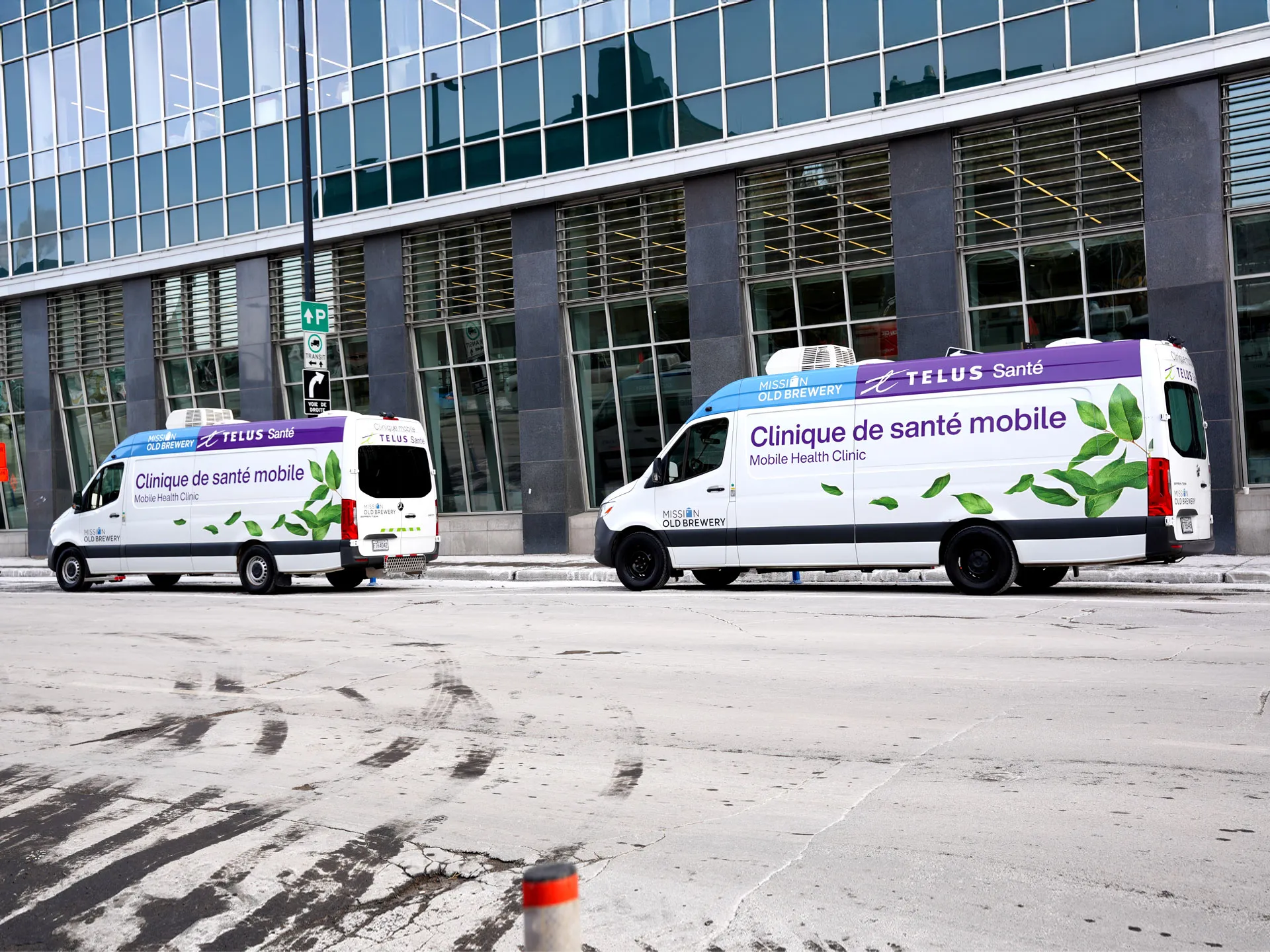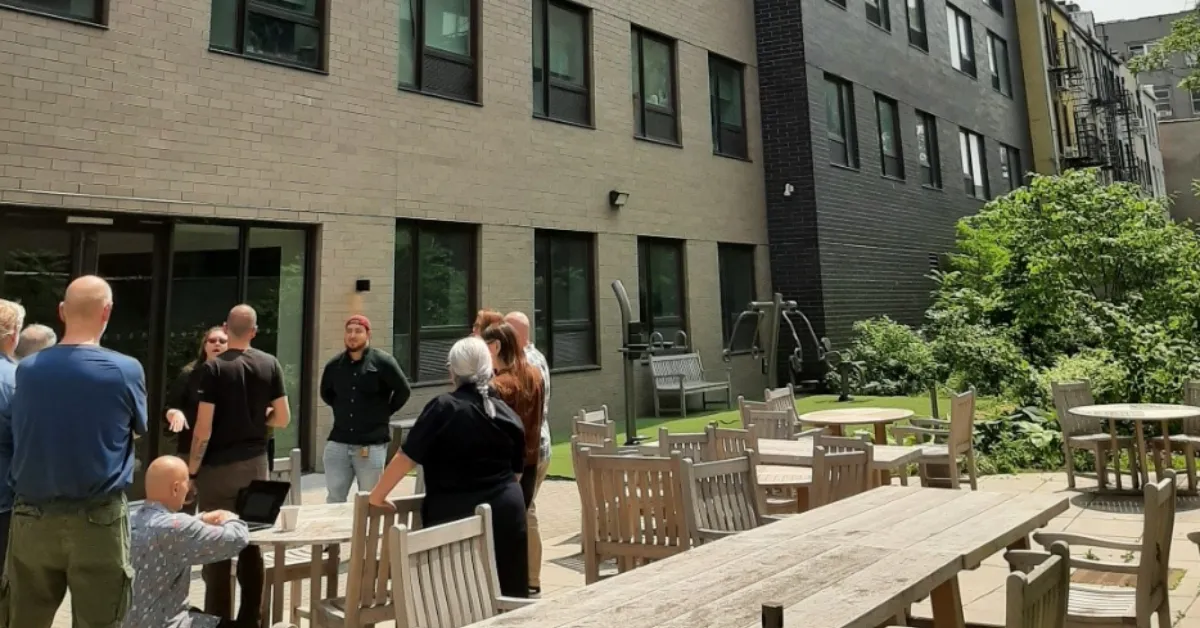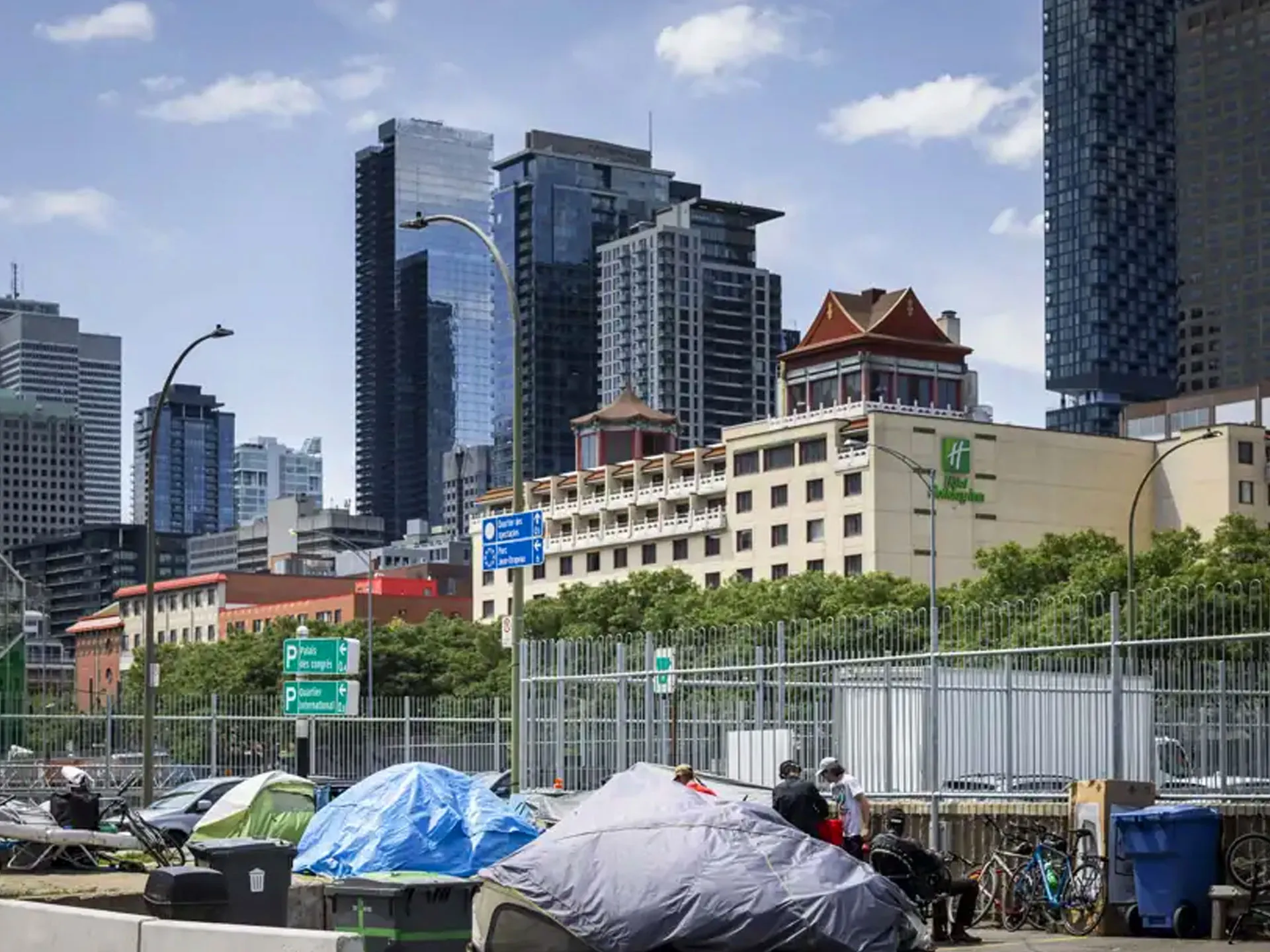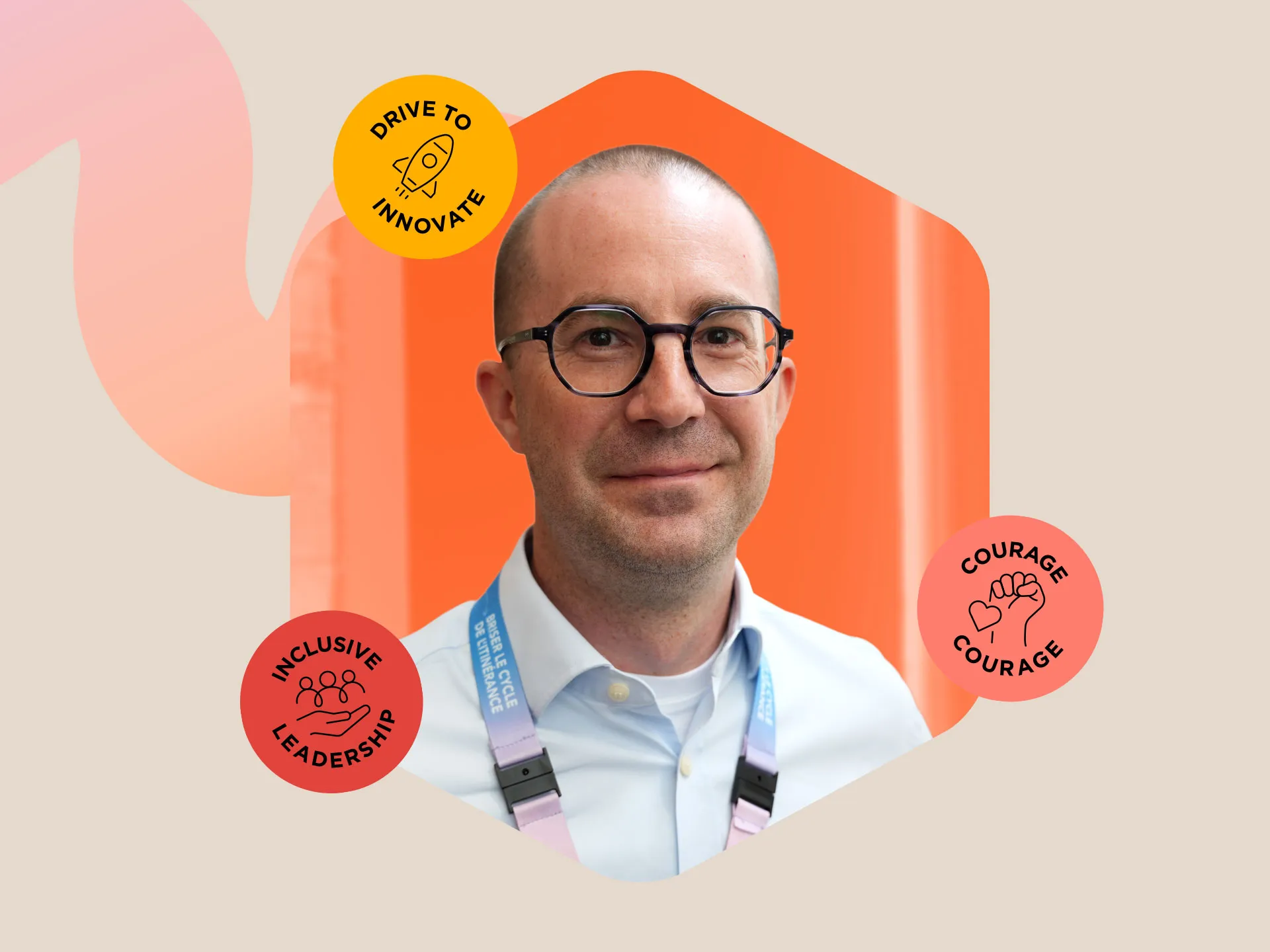
NYC and homelessness

*This blog post was written by James Hughes, our President and CEO, following a study tour to New York City’s leading homeless resources.
- There’s a famous line to describe New York City that goes “if I can make it there, you can make it anywhere”. For the city’s homeless population, that challenge is increasingly daunting.
I was recently part of a Canadian leader’s study tour of many of New York City’s leading agencies fighting homelessness on the ground. Over the course of three days, our group of 30 leaders from every part of Canada (except the Atlantic provinces and the North) visited organizations in four of the city’s five boroughs. Day 1 consisted of meetings with street outreach and shelter teams from the Bronx (BronxWorks) and a masslve mixed housing operator (Community Access) also in the Bronx. Day 2 brought us to Brooklyn to visit with the Bookmobile outreach team from the Brooklyn Library followed by an uber ride to Queen’s to see how the NYC police force trains its recruits to interact with people experiencing homelessness with severe mental illness. Day 3 saw us in New Jersey speaking with Julia Orlando about the vision and operations of the Bergen Housing and Health Authority for homeless people followed by a visit to the LGBTQ+ youth focused agency called the Ali Forney Centre in Manhattan.
Like in Montreal, the context in which these agencies operate has changed considerably since the COVID-19 pandemic. A greater overall homeless population, more people sleeping rough in encampments, a spike in drug poisoning and overdoses, a large increase in refugees and asylum seekers, and a housing crisis together form the parameters within which NYC agencies attempt to provide housing to the people they serve. However, unlike Montréal, New York City is legally bound to provide shelter to people experiencing homelessness within 3 days of such a request being made. To meet this obligation, the City, through its Department of Homeless Services, commissions non-profit agencies like several of the ones we met on our study tour to provide services and shelter to the growing unhoused population.
How big is the population? Here’s what the city’s Coalition for The Homeless says:
“In December 2022, there were 68,884 homeless people, including 21,805 homeless children, sleeping each night in New York City’s main municipal shelter system. A near-record 22,720 single adults slept in shelters each night in December 2022”.
For comparison purposes, there are approximately 1600 beds in the City of Montreal’s shelter system. In other words, NYC’s shelter population is about 40 times larger than Montreal’s while the population is only about four to five times larger.
NYC Mayor Eric Adams is attempting to curtail the “right to shelter” obligation imposed upon the City saying simply it does not have the resources to continue to fulfill the mandate. Here is the Mayor in his own words:
“Given that we’re unable to provide care for an unlimited number of people and are already overextended, it is in the best interest of everyone, including those seeking to come to the United States, to be upfront that New York City cannot single-handedly provide care to everyone crossing our border,” Adams said in a statement Tuesday2.
The community sector was understandably up in arms over the decision to contest the right to shelter. Stephen Banks, the former Commissioner of the Department, castigated the Mayor saying the latter’s position will increase street homelessness: “It is hard to see how asking a court to suspend the right to shelter that is secured by the New York state constitution is a winning strategy because there will be far more people sleeping on the streets if the city’s request is granted, and that is in no one’s interest”3 he said.
The agencies we met during our study tour were understandably circumspect about the conflict between the city administration and the advocates over the right to shelter. My overall sense was that the debate will have little impact on them. Their growth may slow but they will continue to be in very high demand.
And we can learn a lot from them.
BronxWorks shelters, called “safe havens”, are all single rooms. No dorms. The quality of the clinical environment is enhanced considerably as a result.
Community Access manages over 2200 units of housing for homeless individuals, families and couples. And it has 900 New units in the pipeline. Their secret is banking land using operating surpluses until public funding is available for development.
Bergen Housing and Health Authority in New Jersey has a wonderfully simple method of prioritizing its clientele, whom they call “guests”, for housing opportunities. Whenever a guest is “housing ready”, meaning the person possesses an ID and an income, the person is added to the housing list. As soon as the person makes it to the top of the list, the individual gets dibs on the next apartment that become available. This simple “By Name” list ordered by date of housing readiness is a powerful….and equitable…. manner of managing housing access.
While these organizations appear to be well run, stable and well staffed, they, like the City itself, are simply unable to imagine meeting the task of addressing the basic needs of NYC’s homeless population let alone accompanying them all into sustainable housing….. or preventing them from becoming homeless in the first place. Their volume is simply too overwhelming. And the diversity of their clientele, opiate crisis and limited housing options turn overwhelming into impossible.
What about our city? Montreal has a very long way to go to get more efficient and effective in both preventing and treating homelessness. NYC has practices and protocols, including data collection, management, and sharing, we can draw from to meet our common objective to reduce and end homelessness….even in the face of a housing crisis of our own. However, with such a relatively small unhoused population, probably around 4000 to 5000 people on any given night, we can surely think, plan and act in such a way as to ensure we avoid ever having to face the challenges NYC faces today.
Dernières nouvelles
-
 The Old Brewery Mission and TELUS Health for Good launch second mobile
The Old Brewery Mission and TELUS Health for Good launch second mobile -
 Homelessness in the downtown core: We must house, care and innovate
Homelessness in the downtown core: We must house, care and innovate -
 Meet Jean-François Dagenais, Vice President of Finance, IT and Facilities
Meet Jean-François Dagenais, Vice President of Finance, IT and Facilities -
 Old Brewery Mission unveils new employer brand
Old Brewery Mission unveils new employer brand -
 Another resounding success for the Ken Reed Golf Tournament: $334,091 raised for the Old Brewery Mission!
Another resounding success for the Ken Reed Golf Tournament: $334,091 raised for the Old Brewery Mission! - See all news